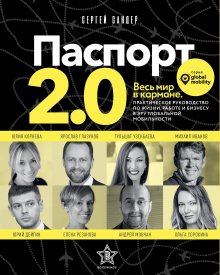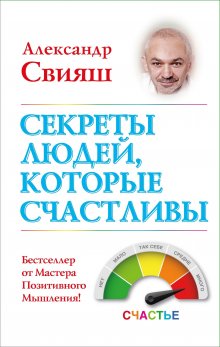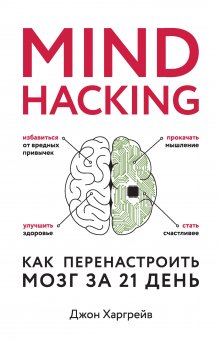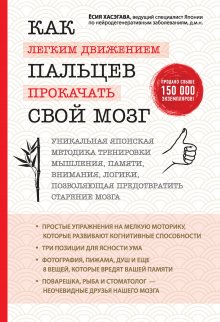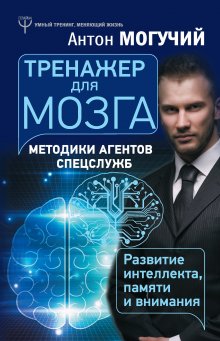Дэниэл Амен - Полюби свой мозг
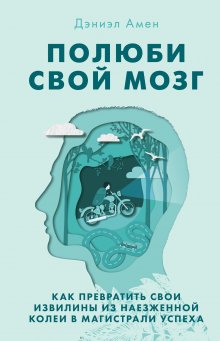
Все авторские права соблюдены. Напишите нам, если Вы не согласны.
Описание книги "Полюби свой мозг"
Описание и краткое содержание "Полюби свой мозг" читать бесплатно онлайн.
14
B. Meyer et al., “Progressive Muscle Relaxation Reduces Migraine Frequency and Normalizes Amplitudes of Contingent Negative Variation (CNV),” Journal of Headache and Pain 17, no. 1 (December 2016): 37, doi: 10.1186/s10194-016-0630-0.
15
A. B. Wallbaum et al., “Progressive Muscle Relaxation and Restricted Environmental Stimulation Therapy for Chronic Tension Headache: A Pilot Study,” International Journal of Psychosomatics 38, nos. 1–4 (February 1991): 33–39.
16
T. Limsanon and R. Kalayasiri, “Preliminary Effects of Progressive Muscle Relaxation on Cigarette Craving and Withdrawal Symptoms in Experienced Smokers in Acute Cigarette Abstinence: A Randomized Controlled Trial,” Behavior Therapy, 46, no. 2 (November 2014): 166–76, doi: 10.1016/j.beth.2014.10.002.
17
K. Golding et al., “Self-Help Relaxation for Post-Stroke Anxiety: A Randomised, Controlled Pilot Study,” Clinical Rehabilitation 30, no. 2 (February 2016): 174–80, doi: 10.1177/0269215515575746.
18
S. Brunelli et al., “Efficacy of Progressive Muscle Relaxation, Mental Imagery, and Phantom Exercise Training on Phantom Limb: A Randomized Controlled Trial,” Archives of Physical Medicine and Rehabilitation 96, no. 2 (February 2015): 181–87, doi: 10.1016 /j.apmr.2014.09.035.
19
A. Hassanpour Dehkordi and A. Jalali, “Effect of Progressive Muscle Relaxation on the Fatigue and Quality of Life Among Iranian Aging Persons,” Acta Medica Iranica 54, no. 7 (July 2016): 430–36; M. Shahriari et al., “Effects of Progressive Muscle Relaxation, Guided Imagery and Deep Diaphragmatic Breathing on Quality of Life in Elderly with Breast or Prostate Cancer,” Journal of Education and Health Promotion 6 (April 19, 2017): 1, doi: 10.4103/jehp.jehp_147_14.
20
Y. K. Yildirim and C. Fadiloglu, “The Effect of Progressive Muscle Relaxation Training on Anxiety Levels and Quality of Life in Dialysis Patients,” EDTNA/ERCA Journal 32, no. 2 (April – June 2006): 86–88.
21
A. K. Johnson et al., “Hypnotic Relaxation Therapy and Sexual Function in Postmenopausal Women: Results of a Randomized Clinical Trial,” International Journal of Clinical and Experimental Hypnosis 64, no. 2 (2016): 213–24, doi: 10.1080/00207144.2016.1131590.
22
X. Ma et al., “The Effect of Diaphragmatic Breathing on Attention, Negative Affect and Stress in Healthy Adults,” Frontiers in Psychology 8 (June 6, 2017): 874, doi: 10.3389/fpsyg.2017.00874; Y. F. Chen et al., “The Effectiveness of Diaphragmatic Breathing Relaxation Training for Reducing Anxiety,” Perspectives in Psychiatric Care 53, no. 4 (October 2017): 329–36, doi: 10.1111/ppc.12184.
23
R. P. Brown and P. L. Gerbarg, “Sudarshan Kriya Yogic Breathing in the Treatment of Stress, Anxiety, and Depression. Part II–Clinical Applications and Guidelines,” Journal of Alternative and Complementary Medicine 11, no. 4 (August 2005): 711–17.
24
L. C. Chiang et al., “Effect of Relaxation-Breathing Training on Anxiety and Asthma Signs/ Symptoms of Children with Moderate-to-Severe Asthma: A Randomized Controlled Trial,” International Journal of Nursing Studies 46, no. 8 (August 2009): 1061–70, doi: 10.1016 /j.ijnurstu.2009.01.013.
25
S. Stavrou et al., “The Effectiveness of a Stress-Management Intervention Program in the Management of Overweight and Obesity in Childhood and Adolescence,” Journal of Molecular Biochemistry 5, no. 2 (2016): 63–70.
26
T. D. Metikaridis et al., “Effect of a Stress Management Program on Subjects with Neck Pain: A Pilot Randomized Controlled Trial,” Journal of Back and Musculoskeletal Rehabilitation 30, no. 1 (December 20, 2016): 23–33.
27
J. B. Ferreira et al., “Inspiratory Muscle Training Reduces Blood Pressure and Sympathetic Activity in Hypertensive Patients: A Randomized Controlled Trial,” International Journal of Cardiology 166, no. 1 (June 5, 2013): 61–67, doi: 10.1016/j.ijcard.2011.09.069.
28
S. E. Stromberg et al., “Diaphragmatic Breathing and Its Effectiveness for the Management of Motion Sickness,” Aerospace Medicine and Human Performance 86, no. 5 (May 2015): 452–57, doi: 10.3357/AMHP.4152.2015.
29
R. Fried et al., “Effect of Diaphragmatic Respiration with End-Tidal CO2 Biofeedback on Respiration, EEG, and Seizure Frequency in Idiopathic Epilepsy,” Annals of the New York Academy of Sciences 602 (February 1990): 67–96
30
P. R. Mello et al., “Inspiratory Muscle Training Reduces Sympathetic Nervous Activity and Improves Inspiratory Muscle Weakness and Quality of Life in Patients with Chronic Heart Failure: A Clinical Trial,” Journal of Cardiopulmonary Rehabilitation and Prevention 32, no. 5 (September – October 2012): 255–61, doi: 10.1097/HCR.0b013e31825828da.
31
L. S. Wenck et al., “Evaluating the Efficacy of a Biofeedback Intervention to Reduce Children’s Anxiety,” Journal of Clinical Psychology 52, no. 4 (July 1996): 469–73; R. C. Hawkins et al., “Anxiety Reduction in Hospitalized Schizophrenics through Thermal Biofeedback and Relaxation Training,” Perceptual and Motor Skills 51, no. 2 (October 1980): 475–82.
32
L. Scharff et al., “A Controlled Study of Minimal-Contact Thermal Biofeedback Treatment in Children with Migraine,” Journal of Pediatric Psychology 27, no. 2 (March 2002): 109–19.
33
J. Gauthier et al., “The Role of Home Practice in the Thermal Biofeedback Treatment of Migraine Headache,” Journal of Consulting and Clinical Psychology 62, no. 1 (February 1994): 180–4.
34
A. Musso et al., “Evaluation of Thermal Biofeedback Treatment of Hypertension Using 24- Hr Ambulatory Blood Pressure Monitoring,” Behaviour Research and Therapy 29, no. 5 (1991): 469–78; E. B. Blanchard et al., “The USA-SSSR Collaborative Cross-Cultural Comparison of Autogenic Training and Thermal Biofeedback in the Treatment of Mild Hypertension,” Health Psychology 7 Supplement (February 1988): 175–92.
35
S. P. Schwarz et al., “Behaviorally Treated Irritable Bowel Syndrome Patients: A Four-Year Follow-Up,” Behaviour Research and Therapy 28, no. 4 (1990): 331–35.
36
L. E. Williams and J. A. Bargh, “Experiencing Physical Warmth Promotes Interpersonal Warmth,” Science 322, no. 5901 (October 24, 2008): 606–7, doi: 10.1126/science.1162548.
37
C. Wilbert, “Warm Hands, Warm Heart?” WebMD website, October 23, 2008, https://www.webmd.com/balance/news/20081023/warm-hands-warm-heart.
38
C. A. Lengacher et al., “Immune Responses to Guided Imagery During Breast Cancer Treatment,” Biological Research for Nursing 9, no. 3 (January 2008): 205–14, doi:10.1177/1099800407309374; C. Maack and P. Nolan, “The Effects of Guided Imagery and Music Therapy on Reported Change in Normal Adults,” Journal of Music Therapy 36, no. 1 (March 1, 1999): 39–55; Y. Y. Tang et al., “Improving Executive Function and Its Neurobiological Mechanisms through a Mindfulness-Based Intervention: Advances within the Field of Developmental Neuroscience,” Child Development Perspectives 6, no. 4 (December 2012): 361–66, doi: 10.1111/j.1750-8606.2012.00250.x.
39
X. Zeng et al., “The Effect of Loving-Kindness Meditation on Positive Emotions: A Meta-Analytic Review,” Frontiers in Psychology 6 (November 3, 2015): 1693, doi: 10.3389/fpsyg.2015.01693; B. L. Fredrickson et al., “Open Hearts Build Lives: Positive Emotions, Induced through Loving-Kindness Meditation, Build Consequential Personal Resources,” Journal of Personality and Social Psychology 95, no. 5 (November 2008): 1045–62, doi: 10.1037/a0013262.
40
J. W. Carson et al., “Loving-Kindness Meditation for Chronic Low Back Pain: Results from a Pilot Trial,” Journal of Holistic Nursing 23, no. 3 (September 2005): 287–304.
41
M. E. Tonelli and A. B. Wachholtz, “Meditation-Based Treatment Yielding Immediate Relief for Meditation- Naïve Migraineurs,” Pain Management Nursing 15, no. 1 (March 2014): 36–40, doi: 10.1016/j.pmn.2012.04.002.
42
D. J. Kearney et al., “Loving-Kindness Meditation for Posttraumatic Stress Disorder: A Pilot Study,” Journal of Traumatic Stress 26, no. 4 (August 2013): 426–34, doi: 10.1002 /jts.21832.
43
A. J. Stell and T. Farsides, “Brief Loving-Kindness Meditation Reduces Racial Bias, Mediated by Positive Other- Regarding Emotions,” Motivation and Emotion 40, no. 1 (February 2016): 140–47, doi: 10.1007/s11031-015-9514-x.
44
M. K. Leung et al., “Increased Gray Matter Volume in the Right Angular and Posterior Parahippocampal Gyri in Loving- Kindness Meditators,” Social Cognitive and Affective Neuroscience 8, no. 1 (January 2013): 34–39, doi: 10.1093/scan/nss076.
45
B. E. Kok et al., “How Positive Emotions Build Physical Health: Perceived Positive Social Connections Account for the Upward Spiral between Positive Emotions and Vagal Tone,” Psychological Science 24, no. 7 (July 1, 2013): 1123–32, doi: 10.1177/0956797612470827.
46
R. J. Zatorre and I. Peretz, eds., The Biological Foundations of Music (New York: New York Academy of Sciences, 2001)..
47
T. Schafer et al., “The Psychological Functions of Music Listening,” Frontiers in Psychology 4 (2013): 511. J. Lieff, “Music Stimulates Emotions Through Specific Brain Circuits,” Searching for the Mind (blog), March 2, 2014, http://jonlieffmd.com/blog/music-stimulates-emotions-through-specific-brain-circuits, as cited in B. Goldstein, The Secret Language of the Heart (San Antonio, TX: Hierophant Publishing, 2016), 29.
48
J. Lieff, “Music Stimulates Emotions Through Specific Brain Circuits,” Searching for the Mind (blog), March 2, 2014, http://jonlieffmd.com/blog/music-stimulates-emotions-through-specific-brain-circuits, as cited in B. Goldstein, The Secret Language of the Heart (San Antonio, TX: Hierophant Publishing, 2016), 29.
49
C. Grape et al., “Does Singing Promote Well-Being?: An Empirical Study of Professional and Amateur Singers During a Singing Lesson,” Integrative Physiological and Behavioral Science 38, no. 1 (January – March 2003): 65–74, as cited in Goldstein, The Secret Language of the Heart, 29.
50
B. Goldstein, The Secret Language of the Heart (San Antonio, TX: Hierophant Publishing, 2016), 31.
51
M. Hausmann et al., “Music-Induced Changes in Functional Cerebral Asymmetries,” Brain and Cognition 104 (April 2016): 58–71, doi: 10.1016/j.bandc.2016.03.001.
52
Y. Ferguson and K. Sheldon, “Trying to Be Happier Really Can Work: Two Experimental Studies,” Journal of Positive Psychology 8, no. 1 (January 2013): 23–33, doi: 10.1080 /17439760.2012.747000.
53
E. Brattico et al., “A Functional MRI Study of Happy and Sad Emotions in Music with and without Lyrics,” Frontiers in Psychology 2 (December 1, 2011): 308, doi: 10.3389 / fpsyg.2011.00308.
54
A. G. DeLoach et al., “Tuning the Cognitive Environment: Sound Masking with ‘Natural’ Sounds in Open-Plan Offices,” Journal of the Acoustical Society of America 137, no. 4 (April 2015): 2291, doi: 10.1121/1.4920363.
55
R. Gillett, “The Best Music to Listen to for Optimal Productivity, According to Science,” Business Insider Australia, July 25, 2015, https://www.businessinsider.com.au/the-best-music-for-productivity-2015-7.
56
L. Lepron, “The Songs Scientifically Proven to Make Us Feel Good,” Konbini (website), http://www.konbini.com/us/entertainment/songs-scientifically-proven-make-us-feel-good/.
57
Y. H. Li et al., “Massage Therapy for Fibromyalgia: A Systematic Review and Meta-Analysis of Randomized Controlled Trials,” PLOS ONE 9, no. 2 (February 20, 2014): e89304, doi: 10.1371/journal.pone.0089304.
58
J. S. Kutner et al., “Massage Therapy vs. Simple Touch to Improve Pain and Mood in Patients with Advanced Cancer: A Randomized Trial,” Annals of Internal Medicine 149, no. 6 (September 16, 2008): 369–79; S. H. Lee et al., “Meta-Analysis of Massage Therapy on Cancer Pain,” Integrative Cancer Therapies 14, no. 4 (July 2015): 297–304, doi: 10.1177 /1534735415572885.
59
Babaee et al., “Effectiveness of Massage Therapy on the Mood of Patients after Open-Heart Surgery,” Iranian Journal of Nursing and Midwifery Research 17, no. 2, supplement 1 (February 2012): S120–S124.
60
S. Khilnani et al., “Massage Therapy Improves Mood and Behavior of Students with Attention-Deficit/Hyperactivity Disorder,” Adolescence 38, no. 152 (Winter 2003): 623–38.
61
F. Bazarganipour et al., “The Effect of Applying Pressure to the LIV3 and LI4 on the Symptoms of Premenstrual Syndrome: A Randomized Clinical Trial,” Complementary Therapies in Medicine 31 (April 2017): 65–70, doi: 10.1016/j.ctim.2017.02.003
62
Z. J. Zhang et al., “The Effectiveness and Safety of Acupuncture Therapy in Depressive Disorders: Systematic Review and Meta-Analysis,” Journal of Affective Disorders 124, nos. 1–2 (July 2010): 9–21, doi: 10.1016/j.jad.2009.07.005; P. Bosch et al., “The Effect of Acupuncture on Mood and Working Memory in Patients with Depression and Schizophrenia,” Journal of Integrative Medicine 13, no. 6 (November 2015): 380–90, doi: 10.1016/S2095-4964(15)60204-7.
63
Подписывайтесь на наши страницы в социальных сетях.
Будьте в курсе последних книжных новинок, комментируйте, обсуждайте. Мы ждём Вас!
Похожие книги на "Полюби свой мозг"
Книги похожие на "Полюби свой мозг" читать онлайн или скачать бесплатно полные версии.
Мы рекомендуем Вам зарегистрироваться либо войти на сайт под своим именем.
Отзывы о "Дэниэл Амен - Полюби свой мозг"
Отзывы читателей о книге "Полюби свой мозг", комментарии и мнения людей о произведении.








